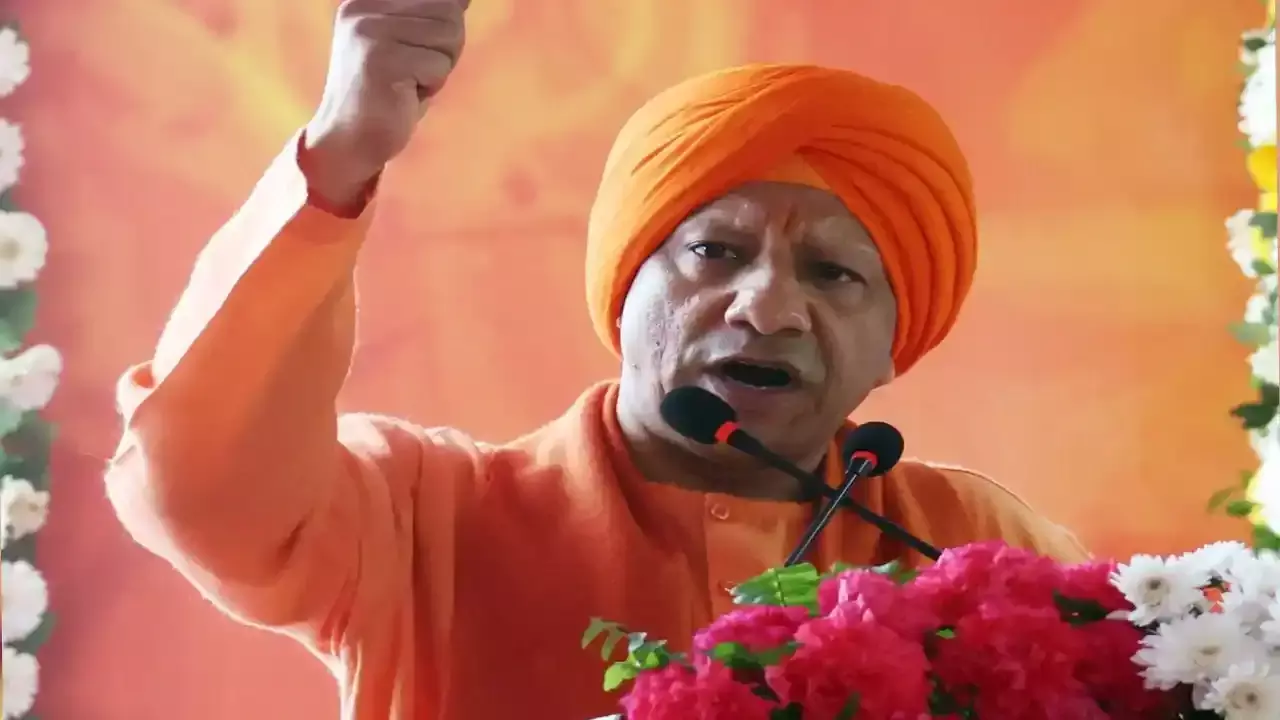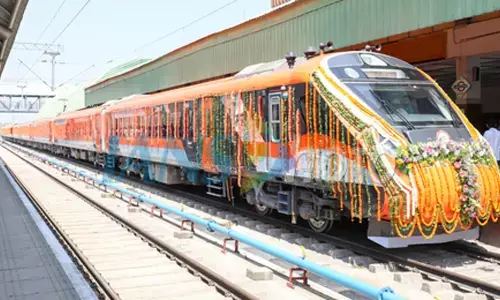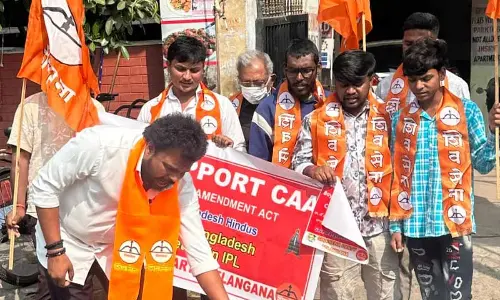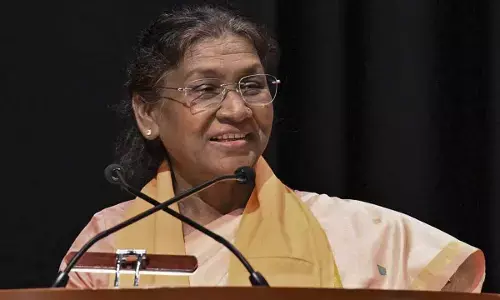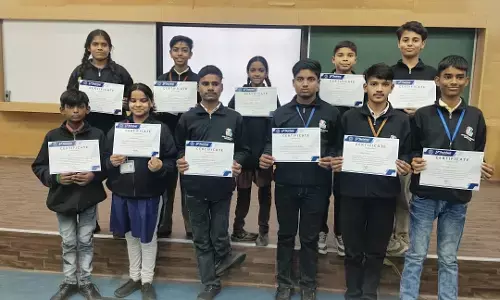Empowering Youth and related issues

The term ‘Youth’ as defined by the UNESCO – is “the period of transition from the dependence to independence and awareness of our independence as members of a community.
The term ‘Youth’ as defined by the UNESCO – is “the period of transition from the dependence to independence and awareness of our independence as members of a community.
- India comes across a young nation with nearly 65 percent of its population falling under 35, thus making it a largely young nation.
- Youth as a potential power to help India on the global scale has to be backed by a substantial policy orientation and support.
- Youth in Public Life
- From the LGBT movement to the ‘equal right for women’ and from environmental concerns to human rights – the youth have been at the centre of activities in public life and often act as a workable pressure group.
- The youth can act ideally as a bridge between two generations. Youth are basically the catalyst of new social thinking, economic development and political activity.
Digital Empowerment
- The digital environment in India has empowered the youth to stand up to the world in a more consolidated manner. It leads to faster communication, quicker learning and also links two geographically distant places on a common platform.
- Technology has enabled equal opportunities in matters of accessibility and youth have been in the forefront of learning and adaptation of new technological options.
- The biggest achievement of the youth and technology co-option can be said to be risk taking spirit and the rise of start-ups.
- National Youth Policy 2014
- According to the Annual Report 2016-17, “The National Youth Policy 2014” reiterates the commitment of the entire nation to the all round development of youth of India so that they can realise their full potential and contribute productively to the nation building process.
Government Initiatives
- The Nehru Yuva Kendra Sangathan has been mandated for developing and engaging youth in nation building activities. The National Service Scheme (NSS) develops the morale and humanistic personality through voluntary social service.
- Skill Upgradation Training Programme (SUTP)-
- It aims to develop vocational training to help generate extra income and boost self confidence.
- Promotion of Folk Art, culture and Yuva Kriti-
- Provides opportunity to the rural youth to showcase and promote their culture and talent.
- Mahatma Gandhi Yuva Swachta Abhiyaan and Shramdaan Karyakram-
- To alert and engage the youth in contributing to the cleanliness drive and water conservation.
- Life Skill Training for Adolescents (Empowerment for Adolescents)-
- Training youth in a manner that enables them to cope with the pressure and make health life choices.
- Aims to sensitize and make aware the adolescent about reproductive sexual health, the issues and concerns.
Tribal Youth Exchange Programme (TYEP)
- The aim is to pick up potential youth from the left wing extremism affected tribal belt and tour them to other parts of the nation.
- It enables them to develop and nationalize their mind set without the influence of a dominant local ideology.
- Concerns / Challenges
- The youth today have sadly been subjected to the ill effects of fast growing urban sutures and are drawn to crimes even to maintain a living.
- A major reason for this negative outlook is the disparity between availability and accessibility.
- While there may be programmes and initiatives undertaken by the government – the method or means to avail them has not been easy.
- Dominant hurdles in accessing these facilities are the financial constraints or the social structure.
Job Creation
- Indian youth can contribute to higher economic growth if properly absorbed in the labour market.
- The country is experiencing a youth bulge which is much more pronounced in the northern and eastern backward states of the country.
- However the number of jobs created each year is inadequate to absorb this growing population of youth in the labour market.
- Younger people are joining non-agricultural sectors such as construction, manufacturing and trade and related activities in greater numbers.
- This shift from agriculture is largely due to the fact that agriculture is not able to absorb more labour and because it does not offer remunerative jobs for the young entrants in the labour market who have better educational achievements.
Unemployment
- Unemployment is higher in urban than in rural areas and for females compared to males.
- Unemployment among youth rises with increase in the level of education.
- The Indian labour market is not only creating inadequate jobs, but the discrimination prevails against the females in recruitment in the labour market.
- An additional reason can be that jobs suitable for women are not being created or there is a lack of suitable infrastructure facilities such as transport, crèche facilities, etc which could facilitate women’s access to jobs.
Recent Government initiatives
Several new schemes in recent years have been launched to encourage entrepreneurship among the youth, such as, Start-up India, Stand-up India, Pradhan Mantri Mudra Yojana, Ease of Doing Business, Start-up Village Entrepreneurship Programme etc.
Way Forward
- India is going through a phase of demographic transition due to which the proportion of youth in the total population is increasing.
- An increasing number of youth require good education and a steady creation of suitable jobs. Employment creation needs to be a part of macro and other economic policies.
- To accelerate the process of job creation, different ministries need to include job creation in all their programmes and policies.
- Regional inequality needs to be corrected so that local youth are able to get employment in the regions itself. There is a need for suitable policies and programmes so that more and more women get employment.
- The country needs to move fast so that it realizes the demographic dividend.
- If it fails, the demographic dividend will turn into demographic disaster.
Job Creators
- India needs 10 million jobs a year and global data shows that it is start-ups, not large enterprises that create new set jobs in any country.
- Start-ups are also the centres of innovation and are a great way to enhance employment creation in the economy.
- Start-up India initiative aims at fostering entrepreneurship and promoting innovation by creating an ecosystem that is conducive for growth of Start-ups.
- The objective is that India must become a nation of job creators instead of being a nation of job seekers.
Promoting Entrepreneurship
- Entrepreneurship and Start-ups are only a recent phenomenon in the country.
- Doing a start-up is tough and every country sees more failures than success.
- Entrepreneur needs to be prepared to face failures and unprecedented hardship.
- For a start-up, it is very important to have mentors who have been through a similar process of starting or have business experience.
- A great mentor is often what separates success from failure by providing valuable inputs.
- However there is no formal mechanism to mentor start-ups in the country.
Addressing Funding Challenges
- The challenges of funding, patents and creation of intellectual property remain.
- The long process of registration of patents and lack of incentives for research and development is a reason why many start-ups prefer to be domiciled abroad. Around 90% of funding for start-ups comes from foreign venture capitals.
- According to a recent study, over 94% of the new businesses fail during first year of operation.
Lack of funding turns to be one of the common reasons. Funding options for start-ups that will help them to raise capital for their business are:
Pradhan Mantri Mudra yojana
- Bootstrapping or self funding.
- Crowd funding.
- Angel investment.
- Venture capital.
- Business incubators and accelerators.
- Microfinance providers or NBFCs.
- Youth as a Changing Agent
- India is at the cusp of demographic transition wherein 65% of the population is in the working age 15-59.
- This offers a unique opportunity to become the skill capital of the world to meet the skilled manpower requirements of ageing economies by appropriate skilling in consonance with the standards accepted across countries.
- As per the National Youth Policy 2014 all young persons in the age group 15-29 years constitute youth population which is a diverse group with varying needs, aspirations and requirements.
- The contribution of youth to the GDP can be increased by increasing their labour force participation and their productivity.
- The need of the hour is to empower youth to achieve their full potential and to enable India to be the leader in supply of skilled labour force.
- The demographic advantage that India enjoys is not uniformly distributed across the country.
- Mobilizing the youth for vocational education / skill development is difficult due to lack of willingness to migrate, inability to pay for training, low literacy level, lack of awareness, among others.
Youth and Labour Market
- There has been a decline in labour force participation rate for all age groups irrespective of gender and spatial distinction.
- However, the decline has been very sharp for the rural females which could be attributed to the absence of job opportunities in the rural areas or due to social / religious customs.
- The challenge is to address the problem of working poor, insecurity at the workplace, lack of market linked skills, information asymmetry, poor perception about skill development. What emanates from above is need to
- Match supply to current demand for skills.
- Help workers and enterprises adjust to change.
- Building and sustaining competencies for future labour market needs.
Initiatives for Employability
- National Skill Development Mission together with new National Policy for Skill Development and Entrepreneurship was launched in 2015.
- The mission is focussing on
- Creating a pipeline of skilled people.
- Upskilling and reskilling to align supply for demand.
- Advocating National Skill Qualification Framework to facilitate certification according to global standards.
- Matching supply and demand and catalyzing the entrepreneurship.
- There is a big push for vocational education both in terms of capacity and quality improvement by• reorienting the vocationalisation of school education from class 9 onwards and involving the industry in course curriculum, practical training and reforming industrial training institutes.
Mapping Aspiration of Youth
- Mapping aspirations is key to facilitate access to decent employment opportunities for socio economic inclusion.
- In most states, there is greater demand in sectors such as construction, transportation and logistics, agriculture and allied activities, but the demand for these occupations is low in most states.
- Therefore mapping aspiration is crucial for demand supply match and fulfilling economy requirement. Recognition and awards for excellence in skill would motivate and encourage youth for skill training.
- The awareness about dignity of labour from young age would help in changing the perception about the blue-collared jobs.
Mobilisation Key for Scaling
- The success of a skill training programme depends on how best we are able to mobilise.
- The poor mobilisation is due to Lack of information about vocational courses and labour market outcomes, unwillingness to migrate, outdated curriculum etc.
- The Skill Sakhi Model of Maharashtra government wherein young women from the community are trained to mobilise women for skill development programme is a novel way of creating local change makers for taking ahead the agenda of skill development.
Addressing Diversity
- The Indian labour market shows sectoral, gender and spatial diversity.
- Labour market has a preponderance of informal employment (93%) with just about 8% working in formal sector.
- Women constitute about 48% of the total population but their participation in the labour force is just about 22%.
- If the capacity of women is built and they are linked with the development process, then the development of any country gets speed up exponentially.
- The specific policy intervention for increasing women participation requires providing adequate logistic support, focus on both skilling / re-skilling and readiness on the part of employers to employ them.
- The initiative by Government of Haryana for building capacities of women in occupations in the steel sector with the help of Jindal Steels is worth replicating.
- There are infrastructure gaps in the North and North Eastern region Vis a Vis southern and western region. So it is necessary to focus on infrastructure creation in these regions.
- The efficiencies of private sector need to be leveraged either in terms of Corporate Social Responsibility or direct participation in infrastructure development, in training and other areas.
Reskilling / Upskilling of Prior Learning
- There is a need to provide school dropouts an opportunity of improving their skill levels through re-skilling and up-skilling.
- The challenge is to identify such workers. There is a need for creating the skill gap analysis and on the-ground hands-on training delivery.
- School to Work Transition Surveys (SWTS)
- The labour force survey provides information on employment, unemployment and out of labour force etc.
- However it does not provide information on job satisfaction, ease or difficulty of the school-to-work transition.
- The SWTS would provide timely and relevant labour market information. These would help in identifying vulnerable groups so that policy makers can take informed decisions that target the right population.
Indian Diaspora: A Youth Brigade
- According to a survey conducted by UN Department of Economic and Social Affairs (DESA) in 2015,India’s Diaspora population is the largest in the world.
- Other than US, gulf countries are the next most favoured destination of Indian emigrants.
- Indian Diaspora has a substantial presence in such countries of the world which were colonized by the imperial British government.
- Revolutionaries like Savarkar, Madam Bhikaji Kama, Madanlal Dhingra are some of the prominent names associated with India House in London.
- Similarly, a bunch of young revolutionaries founded Ghadar movement in the USA and Canada, thus developing these countries also as prominent centres of contact and regular exchange.
Globalisation: The Pull Factor behind High Immigration
- The later phase of liberalisation in India saw the generation of huge offshore opportunity for young talented Indians.
- Rising production and labour cost in developed countries persuaded them to search for cheap alternatives and both Indian land and Labour came in handy for their needs.
- It was thus a win-win situation for both the countries.
Silicon Valley: A Tale of successful Indian entreprneurs
- Silicon Valley in the US which is the largest global hub of software technologies and start-ups has over the years acquired an Indian face.
- Some of the giant software companies located in Silicon Valley like Google, Microsoft, AMD, and Adobe etc have Indian CEOs.
- Indian immigrants had the highest level of education even surpassing the educational standards of Native Americans.
- In 2015, 82% of Indian immigrants (ages 25 and over) had a bachelor’s degree or higher, compared to 30% of native born adults.
Brain Drain or Cultural Ambassadors
- India receives approximately $70 billion as remittances from its expatriate community living in various parts of the world. This is the highest amount received by any country.
- Over the decades Indian expatriate communities glorified the wisdom, culture and values of Indian land and civilization across the globe.
- They helped build and alternative and strong image of India different from the earlier image of being the land of snake charmers.
- However, the departure abroad of a large number of well trained Indians naturally has led to concerns about “Brain Drain” in India.
- India supplies most trained foreign doctors to English speaking OECD countries. Such massive emigration of health professionals has had a negative impact on India, especially in rural areas where the dearth of doctors is already so high.
- Expatriation rate of Indian doctors is around 10% while the same rate in China is just 1%.
- 90% of the professionals trained in genetic engineering and biotechnology migrate to USA after the completion of their studies leaving Indian laboratories and R&D centres devoid of quality researchers.
Demographic Dividend to Diasporic Dividend
- India already has the largest population of Diaspora in the world.
- Thus India will have the onus to reap twin benefits from its demographic dividend domestically and Diasporic dividend internationally.
- Young Indian Diaspora spread across all the major countries of world is the biggest tool of Indian soft power.
- The present situation demands dedicated efforts by the Indian government to channelize R&D initiatives taken by Indian Diaspora back home.
Pravasi Bharatiya Divas (PBD)
- An annual meeting held every year to celebrate the achievements of Indian Diaspora and felicitate them for their efforts for establishing links between India and their countries of residence.
- Of late, PBD has been used as a podium to showcase the growth and development stories of India to boost the confidence of Indian expatriates to invest in India.
Merger of PIO and OCI cards-
The merger has been done with the intention to facilitate hassle free entry of persons of Indian origin into India.
Youth Pravasi Bharatiya Divas-
The government inaugurated this scheme to connect with the youth, the new generation of pravasis growing up all over the world.
Pravasi Bharatiya Kendra
- The Indian Diaspora can now visit and stay at Pravasi Bharatiya Kendra in New Delhi.
- They can search their roots, obtain investment advice and hold business meetings.
Vajra – Visiting Adjunct Joint Research Faculty -
The scheme is envisioned to contribute to the nation’s growth in science and technology.
Know India Programme (KIP)-
The objective is to help familiarize Indian Diaspora youth, in the age group if 18-26 years with Indian land and their ancestors and to bond closely with contemporary India.
Conclusion
- Of late, conservative governments in countries like USA, UK and Australia have announced to curtail the work visas to highly skilled Indians.
- As Indians were the biggest beneficiaries of such visas, any such move would not only impact their carrier opportunities but also the stay and residence of Indian expatriates.
- Saudi Arabia also introduced Nitaqat scheme which protects its domestic work spaces from outsiders.
- Young population is an asset domestically as well as internationally, so to train them according to the specific needs of the countries more dedicated schemes like Pravasi Kaushal Vikas Yojana needs to be floated.
Expected Questions
1) The increasing size and complexity of the Diaspora requires the government to expand capacity and improve procedures. In this regard, examine what government is doing and what it should do.
2) “A Diaspora’s potential economic importance goes well beyond remittances.” In the light of the statement and with reference to India’s Diaspora, critically examine their economic potential for India.
3) With suitable examples analyse how the presence of large Indian Diaspora and shared colonial past have been instrumental in forging good relationship between India and few countries spread across the world.
4) “India’s brain drain is West’s brain gain.” Critically discuss why India’s scientists move to foreign countries and excel. Do you think brain drain is a thing of past, especially in the field of science? Examine.
5) Discuss the various initiatives of Government of India to convert brain drain into brain gain.
By Gudipati Rajendera Kumar








